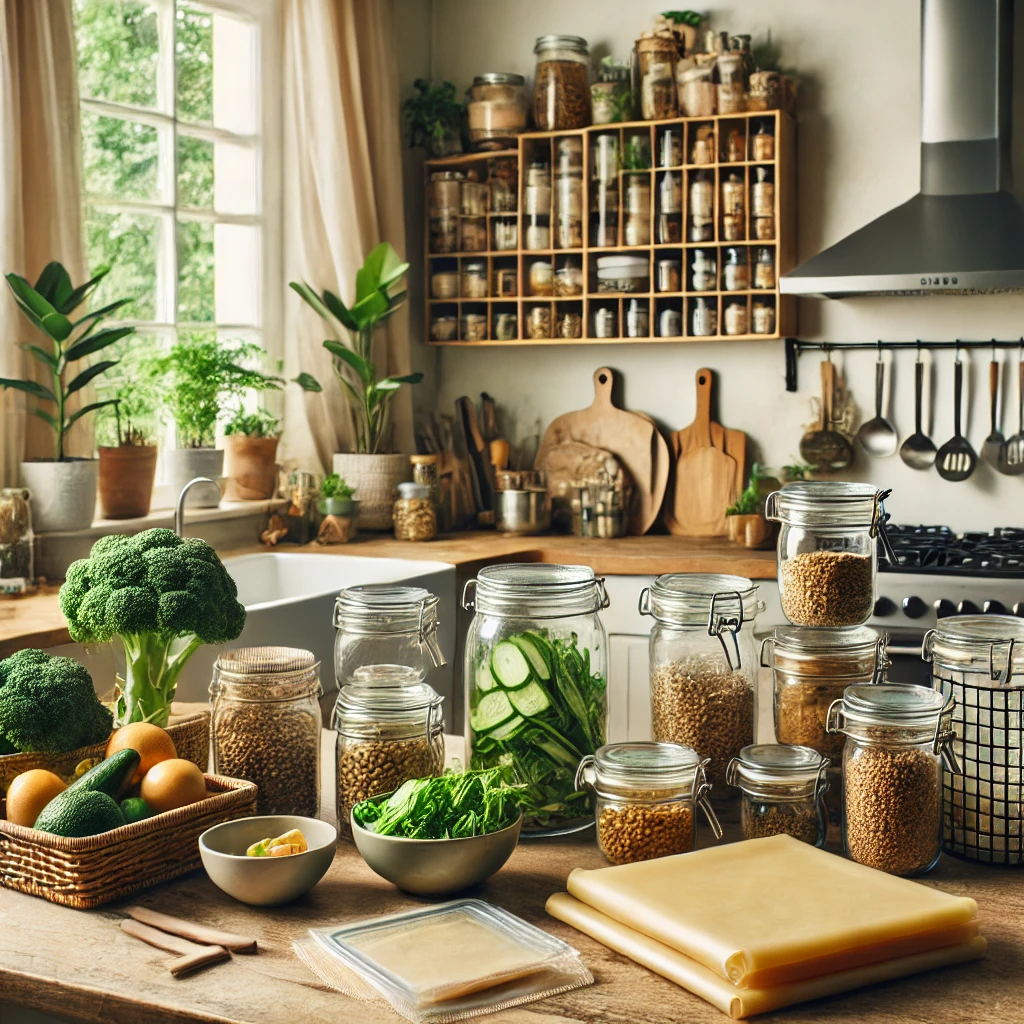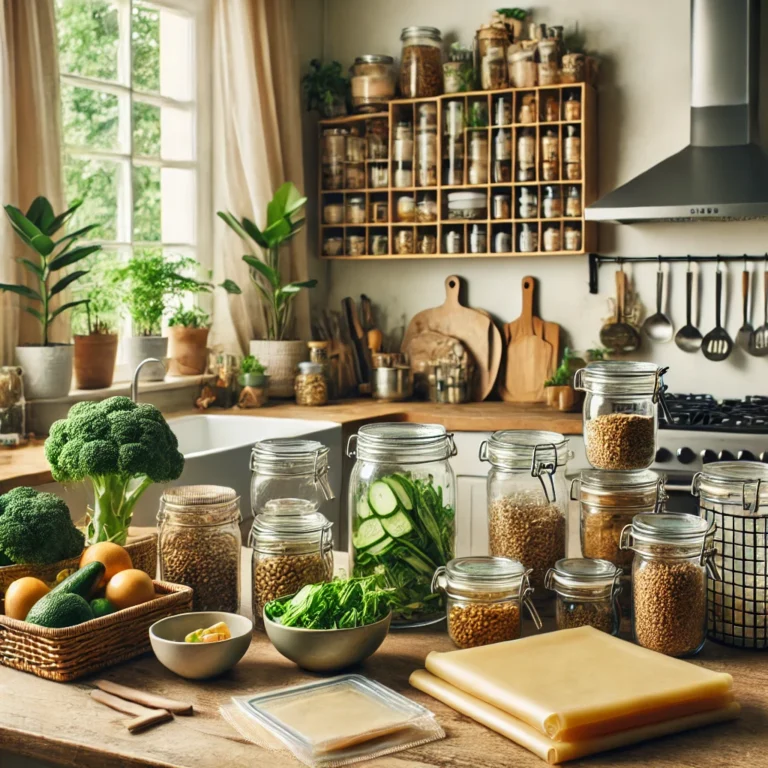Physical Address
304 North Cardinal St.
Dorchester Center, MA 02124
Physical Address
304 North Cardinal St.
Dorchester Center, MA 02124


Meal prep isn’t just a time-saver—it’s also a fantastic way to reduce food waste and make more sustainable choices in the kitchen. By planning your meals and using eco-friendly practices, you can create a routine that’s good for the planet and your schedule. Here’s a guide to eco-friendly meal prep, complete with tips to minimize waste, save time, and cook sustainably.
When we plan meals and prepare ingredients ahead of time, we’re less likely to buy excess food that might go to waste. In fact, it’s estimated that about one-third of the food produced globally is lost or wasted, according to the United Nations. Meal prepping allows us to plan our ingredients carefully, buy only what we need, and reduce the chances of waste.
Eco-friendly meal prep also emphasizes sustainable practices like using reusable containers, buying in bulk, and choosing seasonal produce, which has a smaller environmental impact. By being mindful of what we cook and how we store it, we’re making a positive impact on our planet and building a sustainable lifestyle.
Using seasonal produce is one of the simplest ways to reduce your carbon footprint. Locally-grown foods don’t require as much transportation, which means less pollution and fresher ingredients. Seasonal produce is often more affordable and nutritious too.
Example Tip: Plan your meals around what’s in season. In winter, focus on root vegetables and greens, while in summer, include berries and tomatoes. Not only will your meals taste better, but you’ll also be supporting sustainable agriculture.
Buying in bulk can reduce packaging waste, especially if you bring your own containers or use reusable produce bags. Bulk items like grains, nuts, and legumes are great for meal prep since they’re versatile, easy to store, and can be used in a variety of dishes.
To get started, look for a local bulk store or a grocery store with a bulk section. Websites like Litterless can help you find bulk stores near you.
Batch cooking—preparing multiple servings of a meal at once—saves time and conserves energy by reducing the number of times you need to cook each week. It’s also a great way to avoid the temptation of takeout or food delivery, which often come with single-use packaging.
Cook a large pot of soup, stew, or grains, and portion them out for the week. You can also prepare versatile ingredients like roasted vegetables or cooked beans to mix and match in different meals.
Using reusable containers is key to eco-friendly meal prep. Instead of single-use plastic bags or containers, opt for glass, stainless steel, or silicone containers that you can use again and again. Mason jars are a great, affordable option for storing salads, snacks, and even soups.
For those who pack their lunch, a reusable lunch box or beeswax wraps are ideal alternatives to plastic wrap and sandwich bags. Brands like Bee’s Wrap offer natural wraps made from beeswax that are reusable and biodegradable.
Using leftovers creatively is a key strategy in reducing food waste. Leftovers can be transformed into new meals or enjoyed just as they are. For example, roasted vegetables can be added to salads or grain bowls, and cooked grains can be used in stir-fries or soups.
Example Tip: If you make extra pasta sauce or cooked veggies, try incorporating them into different meals throughout the week. This not only saves time but also reduces waste by keeping your meals fresh and interesting.
Labeling and organizing your ingredients helps you track what you have and prevents food from going bad. Use erasable labels on containers or dedicate sections in your fridge for specific items, like prepared meals and fresh produce.
By keeping an organized fridge and pantry, you’ll have a better idea of what needs to be used up, reducing the chances of food going to waste.
Choosing sustainable storage options is a key part of eco-friendly meal prep. Here are some ideas to get started:
These options help reduce single-use plastics and keep your food fresh, making meal prep easier and more sustainable.
Laura, a graphic designer from France, decided to try eco-friendly meal prep to reduce waste and save money. She started by batch-cooking her favorite meals and storing them in glass containers. Over time, she noticed that she was throwing away fewer leftovers and had more control over her ingredients. By buying in bulk and planning her meals, Laura also found that her grocery bills decreased.
Laura’s story is a reminder that sustainable meal prep isn’t just good for the environment—it’s also practical and budget-friendly. At EcoTipsEveryday, we believe that with a few simple changes, anyone can enjoy a more sustainable kitchen routine.
Eco-friendly meal prep is an easy way to reduce food waste, save time, and make sustainable choices. By focusing on seasonal produce, embracing leftovers, and using reusable containers, you can create a routine that benefits both you and the planet.
Question for You:
Have you tried eco-friendly meal prep? What tips have worked best for you? Share your thoughts in the comments, and check out our other articles for more ways to live sustainably.
With a little planning, we can all make a positive impact—one meal at a time.